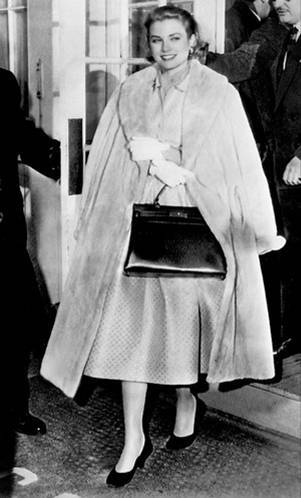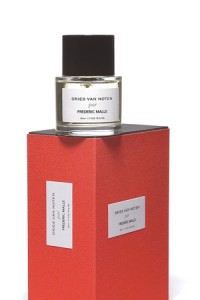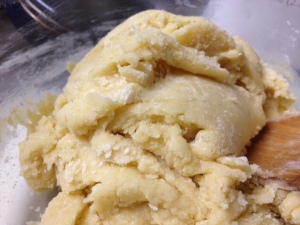The Nawab of Oudh is a nonpareil, an oriental perfume of such magnificent richness and beauty that it left my jaw agape. There is no chance that I shall be — as the famous writer, William Safire, once famously penned — a nattering nabob of negativity. No, Ormonde Jayne‘s latest creation is simply spectacular.
 Nawab of Oudh is one of the new Four Corners of the Earth collection which was released in late 2012 and which pays homage to the different parts of the world that have inspired Ormonde Jayne’s founder, Linda Pilkington. The collection is the result of collaboration between Ms. Pilkington and the perfumer, Geza Schoen, and consists of four fragrances: Tsarina, Qi, Montabaco and Nawab of Oudh. (I have samples of all four fragrances, provided courtesy of Ormonde Jayne, and am working my way through the collection. You can find my review for Tsarina here.)
Nawab of Oudh is one of the new Four Corners of the Earth collection which was released in late 2012 and which pays homage to the different parts of the world that have inspired Ormonde Jayne’s founder, Linda Pilkington. The collection is the result of collaboration between Ms. Pilkington and the perfumer, Geza Schoen, and consists of four fragrances: Tsarina, Qi, Montabaco and Nawab of Oudh. (I have samples of all four fragrances, provided courtesy of Ormonde Jayne, and am working my way through the collection. You can find my review for Tsarina here.)
A nawab (sometimes also spelled as “nabob”) can mean, alternatively, a ruler of an Indian province, or a European person who made a vast fortune in India or overseas. Ormonde Jayne was inspired by the first meaning for the term, describing the fragrance as follows :
Nawab (Ruler) of Oudh is a province of central India. The perfume is inspired by the Nawabs who once ruled over it. It is a potent blend of amber and rose with a soft oudh edge. Yet surprisingly not one ingredient stands out from the others. It achieves a perfume synergy that defies traditional analysis, releasing a pulsating pungency, brooding and hauntingly beautiful, a rich tapestry of fascinating depths, a jewelled veil to conceal its emotional complexity and extravagance.
Every single part of that description applies to the magnificent richness of this stunning perfume. It is no doubt helped by the perfume’s long list of notes, seventeen in all:
top: green notes, bergamot, orange absolute, cardamom, aldehyde. heart: rose, magnolia, orchid, pimento, bay, cinnamon, hedione. base: ambergris, musk, vetiver, labdanum, oudh.
The Nawab of Oudh opens on my skin with a burst of bright, juicy, sweet green notes that have a distinctly tropical, fruited underpinning. There is something that feels very much like green mangoes, alongside the bright, fresh, plump, sun-sweetened lemons and oranges. There is also a heady rose note — sweet, fragrant, dark as the reddest damask, and almost beefy in its richness. Following closely in its footsteps is a spectacular element of velvety magnolia. The whole combination is beautiful beyond words, and I actually said “Wow” out loud as the symphony of notes wafted up to my nose.
The bright, fresh, sweetly floral and fruited tonalities quickly give way to something earthier and spicier. The bay leaf starts to appear, adding an unusual herbaceous and earthy aspect to the sweetness. Dark, rooty vetiver also helps undercut some of the richness, but it is the surprisingly fiery note of red chili peppers that really adds the perfect counterbalance. Together, they work to transform the scent into something much more than a mere floral with zesty citrus notes.
Further depth and complexity are added with the advent of ambergris, and I’m convinced this has to be the real stuff. It smells much richer, almost dirtier, and definitely slightly muskier than the usual amber accords, though the labdanum undoubtedly plays a role in that impression, too. Whatever the particulars, the ambery note has enormous depth but it’s never heavy, molten or gooey. Rather, it’s sheer and light. At the same time, the perfume itself is very strong and heady, encompassing me in a lovely cloud of scent that projects about two feet in distance in these opening moments.
Ten minutes later, the orange absolute is much more noticeable, as is the orchid flower. Both accords mix with the magnolia and rose to create a floral juxtaposition to the various herbaceous, woody, citrus, ambered and slightly musky notes. The final result is a beautifully balanced opening that is never singular nor too sweet. The sweetness is further undercut when the woody notes start to appear. Speaking of appearing, on my second test of the perfume, the bay leaf gained in intensity in opening moments of the scent; during the first test, however, to my surprise, it disappeared after ten minutes. So, too, did the fiery red chili pepper and the earthy vetiver. I point this out because I know some of you struggle with those notes, respectively, and I want to reassure you that (to my nose) they are not an enormous presence or particularly sharp.

Purple rose at Warwick Castle, England. Photo provided with permission by CC from “Slightly Out of Sync” blog.
In fact, nothing in this beautifully crafted, smooth as a well-buffed piece of amber, perfume is sharp or unmodulated. That applies to the agarwood (or oud) as well. It is simply perfect: never medicinal, astringently sharp, pungent or antiseptic. No camphorous elements or images of pink rubber bandages. Instead, you have a very smooth, incredibly rich, and highly sweetened oud note. It waxes and wanes in prominence in that first hour, never dominating but floating just under the flowers. The oud is perfectly interwoven with that rich, dark rose, but neither are the primary focus of the scent at this time.
Instead, Nawab of Oudh is in harmonious balance; this is a superbly well-blended perfume that throws off notes the way a chandelier throws off prisms in the light. I am strongly tempted to add the phrase “it’s beautiful” to the end of every paragraph, but I fear I will sound like a broken record before I’m halfway finished. Nonetheless, my God, is this perfume beautiful!
If any single note were perhaps to dominate in the first ninety minutes, it would be the magnolia. There are many global varieties of this velvety, opulent flower, but it is an incredibly popular and symbolic part of America’s Deep South, in particular. In fact, there is a Texas town called Magnolia that is just outside Houston. In addition, the flower has been the symbol of the state of Louisiana since 1900. (I won’t even get into the famous movie, Steel Magnolias, involving the state of Georgia.) Magnolias have a creamy, rich aroma with a slightly citrus-y nuance and a floral scent that is somewhat similar to gardenia at times and, at other times, closer to jasmine. Here, however, there is a definitely tropical feel to the flower’s velvety lushness and creaminess. It’s heady and strong, but never indolic or sour. Its combination with the orange absolute — and with what I am convinced must be green mangoes — adds a beautiful tropical aspect to the scent. And, yet, its citrus-y aspects also provide some freshness and lightness. The whole thing is simply an incredibly creamy, velvety floral composition of great complexity.

Sir Digvijaysinhji, Maharaja Jam Saheb of Nawanagar in 1935 wearing the emerald and diamond necklace created by Cartier London in 1926 for his uncle, Maharaja Jam Saheb Ranjitsinhji Vibhaji. Source: TheCultureConcept.com
Two hours in, Nawab of Oudh changes. Now, it is oud with cardamom, what feels like cloves, red chili peppers, and the very first hint of labdanum. The magnolia is still present, but it has now receded much more to the background. For the next two hours, the perfume reflects different facets — much like jewels gleaming around a maharajah’s neck. There is: agarwood sweetened by sweet damask rose; dusty, dry spices (cardamom in particular); a touch of muskiness; a hint of jasmine; and rich ambergris. The red chilies pop up now and then, but the perfume is not fiery. It’s a perfectly modulated rosy, spiced, woody amber perfume that is endlessly luxurious, and made with what are, clearly, very expensive, top-quality ingredients.
From the fifth hour until the perfume’s end around 8.5 hour mark, Nawab of Oudh is labdanum heaven. Now, as some of you know, labdanum is one of my all-time favorite notes; I simply adore the more nutty, slightly leathery, dirty and masculine twist on a resin. Here, it’s treated beautifully — intertwined in a lover’s kiss with the heady red rose. It’s a bit too light for my personal, utterly biased tastes — and I would have preferred a more molten, opaque treatment — but nothing about this airy, lightweight (though strong) perfume is about molten heaviness. Instead, labdanum’s ambery note is light, warm, sweet, and infused by a subtle undertone of spices. Its interplay with the heady rose was so beautiful that I will make an embarassing confession: I spent a good chunk of 30 minutes simply lying on my sofa with my nose glued to my arm and inhaling the nutty, rose-strewn amber in ecstasy. It was, quite simply, the perfume equivalent of a food coma.
Nawab of Oudh has good sillage and longevity. The opening phase of the perfume had about 2 feet in projection for the first hour, before dropping considerably. However, it only became really close to the skin around the 4th hour. To be honest, for some of the remaining hours, I had to forcefully inhale at my arm to detect it — though, clearly, I found that no hardship whatsoever! As for longevity, as noted above, it lasted around 8.5 hours on my perfume-consuming skin. I should note, however, that the sillage and longevity drop even further if you don’t put on a lot; on my second test, the sillage became close to the skin at around 2.5 hours and the scent lasted only seven hours. As a whole, Nawab of Oudh a wee bit too airy for my personal liking, but not everyone shares my passion for the most opulently heavy, powerful scents. For those who prefer a less forceful, and more modulated, tempered fragrance, Nawab of Oudh will be ideal.
The only real problem with Nawab of Oudh is its cost. I winced and grimaced when converting the British pound sterling price of £335.00 to U.S. dollars; at the current exchange rate, that comes to approximately $506! The perfume only comes in Eau de Parfum concentration and in a large 100 ml/3.4 oz bottle, so there aren’t cheaper alternatives in a smaller size. If, however, it were more affordable, I would buy Nawab of Oudh in a heartbeat; without a doubt, it has shot up to replace Tolu as my favorite Ormonde Jayne fragrance.
It is probably, therefore, a mixed blessing that Nawab of Oudh is not widely available at the moment. The perfume is not even listed yet on the company’s website (though it probably will be soon). It doesn’t seem available at other European retailers and, as always, Ormonde Jayne fragrances are not sold anywhere in America. However, Nawab of Oudh is available at Ormonde Jayne’s two boutiques in London and is also available online at Harrods. [UPDATE: My apologies but, reading the fine print, it seems that Harrods does not export this item. I assume it has something to do with the UK’s postal regulations on the shipment of perfume. I’m afraid that I have no other purchasing alternatives for you at this time if you live outside London or the UK.]
If you love spicy, rich, complex Orientals (as I do), then Nawab of Oudh will be your personal heaven. It makes me think of Klimt’s The Kiss with its initial start of green, turned into creamy, lush, almost tropical florals, then to sweet, spicy roses and woody, nutty, oriental ambered richness. Frankly, I can give no higher praise than The Kiss.
Disclosure: My sample of Nawab of Oudh was provided courtesy of Ormonde Jayne. However, that did not impact this review. My primary commitment is, and always will be, to be as honest as possible for my readers.

















